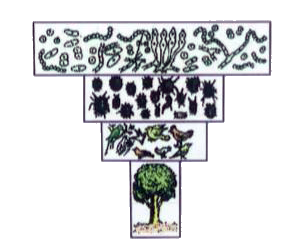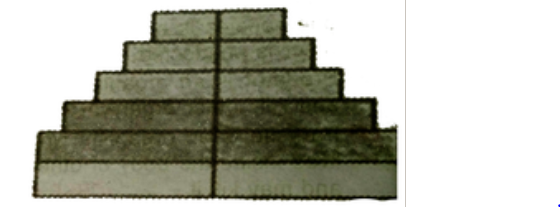Which is not a pyramidal molecule ?
NH3
PCI3
SOCI2
ICI3
The correct Answer is:D
To determine which molecule is not pyramidal, we will analyze the hybridization and steric number of each given molecule using the formula:
Steric Number = (1/2) * (Valence Electrons of Central Atom + Monovalent Atoms - Charge of Cation + Charge of Anion)
1. Identify the molecules and their central atoms:
- NH3 (Ammonia) - Central atom: Nitrogen (N)
- PCl3 (Phosphorus Trichloride) - Central atom: Phosphorus (P)
- SOCl2 (Thionyl Chloride) - Central atom: Sulfur (S)
- ICl3 (Iodine Trichloride) - Central atom: Iodine (I)
2. Calculate the steric number for each molecule:
For NH3:
- Valence electrons of N = 5
- Monovalent atoms (H) = 3
- Steric Number = (1/2) * (5 + 3) = (1/2) * 8 = 4
- NH3 has 3 bond pairs and 1 lone pair, making it pyramidal.
For PCl3:
- Valence electrons of P = 5
- Monovalent atoms (Cl) = 3
- Steric Number = (1/2) * (5 + 3) = (1/2) * 8 = 4
- PCl3 has 3 bond pairs and 1 lone pair, making it pyramidal.
For SOCl2:
- Valence electrons of S = 6
- Monovalent atoms (Cl) = 2
- Steric Number = (1/2) * (6 + 2) = (1/2) * 8 = 4
- SOCl2 has 3 bond pairs and 1 lone pair, making it pyramidal.
For ICl3:
- Valence electrons of I = 7
- Monovalent atoms (Cl) = 3
- Steric Number = (1/2) * (7 + 3) = (1/2) * 10 = 5
- ICl3 has 3 bond pairs and 2 lone pairs, resulting in a T-shaped geometry, which is not pyramidal.
3. Conclusion:
- The molecule that is not pyramidal is ICl3.
Final Answer:
The molecule that is not a pyramidal molecule is ICl3.
- NH3 (Ammonia) - Central atom: Nitrogen (N)
- PCl3 (Phosphorus Trichloride) - Central atom: Phosphorus (P)
- SOCl2 (Thionyl Chloride) - Central atom: Sulfur (S)
- ICl3 (Iodine Trichloride) - Central atom: Iodine (I)
- Valence electrons of N = 5
- Monovalent atoms (H) = 3
- Steric Number = (1/2) * (5 + 3) = (1/2) * 8 = 4
- NH3 has 3 bond pairs and 1 lone pair, making it pyramidal.
- Valence electrons of P = 5
- Monovalent atoms (Cl) = 3
- Steric Number = (1/2) * (5 + 3) = (1/2) * 8 = 4
- PCl3 has 3 bond pairs and 1 lone pair, making it pyramidal.
- Valence electrons of S = 6
- Monovalent atoms (Cl) = 2
- Steric Number = (1/2) * (6 + 2) = (1/2) * 8 = 4
- SOCl2 has 3 bond pairs and 1 lone pair, making it pyramidal.
- Valence electrons of I = 7
- Monovalent atoms (Cl) = 3
- Steric Number = (1/2) * (7 + 3) = (1/2) * 10 = 5
- ICl3 has 3 bond pairs and 2 lone pairs, resulting in a T-shaped geometry, which is not pyramidal.
- The molecule that is not pyramidal is ICl3.
The molecule that is not a pyramidal molecule is ICl3.
Topper's Solved these Questions
- BOOK - VMC MODULES ENGLISHCHAPTER - CHEMICAL BONDING & CHEMICAL STRUCTURE EXERCISE - EFFICIENT50videos
CHEMICAL BONDING & CHEMICAL STRUCTURE
- BOOK - VMC MODULES ENGLISHCHAPTER - ATOMIC STRUCTUREEXERCISE - JEE Advanced (Archive )67videos
ATOMIC STRUCTURE
- BOOK - VMC MODULES ENGLISHCHAPTER - CHEMICAL BONDING & MOLECULAR STRUCTURE EXERCISE - IN-CHAPTER EXERCISE-L9videos
CHEMICAL BONDING & MOLECULAR STRUCTURE
Similar Questions
XeO3 is a trigonal pyramidal molecule .
View SolutionWhich is not a limitation of the ecological pyramid ?
View SolutionWhich one of the following does not have a pyramidal shape?
View SolutionWhich of the given age pyramid reflects a stable human population ?
View SolutionThe BF3 is a planar molecule where as NF3 is pyramidal because :
View SolutionWhich one is an inverted pyramid ?
View SolutionWhich of the following has pyramidal structure ?
View SolutionWhich kind of the pyramid is represented by the given figure
 View Solution
View SolutionWhich kind of pyramid of Biomass obtaied in pond ecosystem?
View SolutionGiven is the age pyramid of a population Decide which kind of growth status it reflects
 View Solution
View Solution

